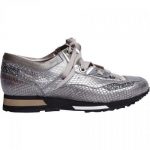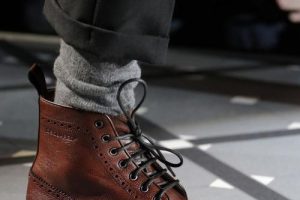When it comes to children’s shoes, design and safety go hand in hand. The footwear industry recognizes the unique needs and challenges of developing shoes for children, whose feet are still growing and developing. In this extensive article, we will explore the world of children’s shoe styles, focusing on the intricate design elements and the paramount importance of safety. From understanding the development of children’s feet to the latest trends in kid’s footwear, this comprehensive guide will leave no stone unturned.
Introduction
Children’s shoes are not just miniaturized versions of adult shoes. They play a crucial role in supporting the growth and development of young, impressionable feet. Properly designed and safe children’s shoes are vital for ensuring that kids have a comfortable and healthy foundation as they explore the world.
In this in-depth exploration of children’s shoes, we will cover various aspects, including:
- The Anatomy of Children’s Feet
- Key Considerations in Shoe Design
- Safety and Health Concerns
- Popular Children’s Shoe Styles
- Trends and Innovations in Children’s Footwear
The Anatomy of Children’s Feet
Understanding the anatomy of children’s feet is the first step in designing appropriate and safe footwear. Children’s feet undergo significant changes as they grow, and these developmental stages should inform the design of their shoes.
Infant Feet
- Soft Cartilage: At birth, a child’s feet are not fully ossified; they consist of soft cartilage that slowly hardens over time.
- Flat Arch: Infants have flat arches, which gradually develop as they start bearing weight on their feet.
- High Fat Content: Infant feet have a high percentage of fat, which makes them appear chubby and rounded.
Toddler Feet
- Growing Bones: As children begin to walk, their bones grow and harden. The arches of their feet may begin to develop.
- Wider Shape: Toddler feet are wider in relation to their length, and their toes may appear more squared off.
- Prone to Injury: Toddlers are prone to common foot injuries, such as ingrown toenails and blisters, due to their exploratory nature.
School-Age Children
- Continued Growth: Children’s feet continue to grow, with the arches becoming more pronounced.
- Toe Alignment: Proper toe alignment becomes essential as the child’s gait matures.
- Support Needs: Arch support and cushioning become necessary as kids engage in various activities.
Key Considerations in Shoe Design
Designing children’s shoes requires a deep understanding of their anatomy and growth. Key considerations in shoe design include:
Size and Fit
Children’s shoes must provide a proper fit. Shoes that are too small can lead to deformities, while those that are too large can cause tripping and discomfort. It is crucial to measure a child’s feet regularly and choose the right size, considering both length and width.
Materials
Selecting the right materials is essential for comfort and durability. Children’s shoes should be made of breathable materials to prevent excessive sweating and odors. Quality leather and synthetic materials are popular choices.
Support
Proper arch support is vital, especially for school-age children. Arch support helps in the development of healthy foot arches and contributes to good posture. The insole should be cushioned to absorb shocks during physical activities.
Flexibility
Children’s shoes need to be flexible to allow natural foot movement. Stiff soles can hinder a child’s ability to balance and walk comfortably. Look for shoes with flexible soles that bend at the ball of the foot.
Toe Box
The toe box should provide ample room for the toes to wiggle and grow naturally. Tight toe boxes can lead to various foot problems, including ingrown toenails.
Safety and Health Concerns
Ensuring the safety and health of children’s feet is paramount in shoe design. Several concerns must be addressed to create safe footwear for kids:
Slip Resistance
Children are active and can easily slip and fall if their shoes lack proper traction. The outsole should be designed to prevent slips and falls, especially in wet or slippery conditions.
Breathability
Breathable materials are essential to prevent moisture buildup in the shoes, which can lead to fungal infections. Well-ventilated shoes help keep children’s feet dry and comfortable.
Heel Support
Children’s shoes should provide adequate heel support to prevent problems like flat feet and pronation. The heel cup should hold the foot securely without allowing excessive movement.
Fastenings
Shoes with secure fastenings, such as Velcro straps or laces, are important to keep the shoes in place and provide a snug fit. Loose-fitting shoes can cause blisters and discomfort.
Allergen-Free Materials
Hypoallergenic materials should be used to prevent allergic reactions in children with sensitivities to certain substances.
Weight
Children’s shoes should be lightweight to avoid unnecessary strain on growing feet and legs.
Popular Children’s Shoe Styles
Children’s shoe styles are diverse and cater to various activities and occasions. Here are some of the most popular types:
Sneakers
Sneakers are versatile and ideal for everyday wear, sports, and play. They offer comfort, support, and durability, making them a favorite among kids.
Sandals
Sandals are great for warm weather and allow feet to breathe. However, they should have proper arch support and secure fastenings to ensure safety.
Dress Shoes
For formal occasions, children’s dress shoes are a must. These can range from classic oxfords to ballet flats, and they should provide a balance of style and comfort.
Boots
Boots are suitable for colder weather and outdoor activities. They should have insulation and good tread for safety.
School Shoes
School shoes are typically designed for daily wear and should be durable, comfortable, and suitable for all-weather conditions.
Athletic Shoes
Athletic shoes are designed for specific sports and physical activities. They should offer support, cushioning, and protection against impact.
Trends and Innovations in Children’s Footwear
The world of children’s footwear is not stagnant. Designers and manufacturers are constantly innovating to meet the ever-evolving needs of young wearers. Here are some of the latest trends and innovations in children’s shoes:
Sustainable Materials
Sustainability is a growing trend in the fashion industry, and children’s shoes are no exception. Manufacturers are increasingly using eco-friendly materials and production methods to reduce their environmental impact.
Customization
Just like with adult shoes, customization is gaining popularity in children’s footwear. Parents can design shoes that match their child’s unique style and preferences, allowing for personalized, one-of-a-kind creations.
Smart Technology
Smart technology is making its way into children’s shoes. Some smart shoes come with GPS tracking for added safety, while others include interactive features and games to make the shoe-wearing experience more enjoyable for kids.
Orthopedic Designs
Orthopedic shoe designs are becoming more stylish and appealing, catering to children with specific foot conditions. These shoes provide the necessary support and comfort without compromising on fashion.
Gender-Neutral Options
Gender-neutral and unisex shoes are gaining traction, breaking away from traditional gender-specific designs. This shift promotes inclusivity and allows children to express themselves freely.
Conclusion
Children’s shoes are not merely miniature versions of adult footwear; they serve a unique and critical role in supporting the healthy growth and development of young feet. Designing safe and well-fitting children’s shoes requires a deep understanding of the evolving needs of kids at different stages of their development. In this final section, we will summarize the key takeaways and emphasize the importance of investing in high-quality, well-designed children’s footwear.
Key Takeaways:
- Understanding Foot Development: Children’s feet go through various stages of development, from soft cartilage at birth to the gradual formation of arches as they grow. Proper shoe design should consider these developmental milestones.
- Size and Fit: Choosing the right size is essential. Regularly measure your child’s feet, considering both length and width, and ensure there’s some room for growth without the shoes being too loose.
- Materials Matter: Breathable and hypoallergenic materials are essential for preventing moisture buildup and allergic reactions. Look for quality leather and synthetic materials that are both comfortable and durable.
- Support and Flexibility: Children’s shoes should provide proper arch support without compromising on flexibility. A cushioned insole and flexible sole are key for comfort and natural movement.
- Toe Box Space: The toe box should allow room for the toes to wiggle and grow naturally. Tight toe boxes can lead to various foot problems.
- Safety Concerns: Slip-resistant outsoles, breathable designs, proper heel support, and secure fastenings are crucial for children’s shoe safety and comfort.
- Footwear Styles: There is a wide variety of children’s shoe styles, from sneakers and sandals to dress shoes and athletic footwear. Choose the appropriate style for the occasion and activity.
- Trends and Innovations: Keep an eye on trends in children’s footwear, such as sustainability, customization, smart technology, orthopedic designs, and gender-neutral options, to ensure that your child’s footwear is up to date and aligned with their preferences and needs.
The Importance of Well-Designed Children’s Shoes
Investing in well-designed children’s shoes is an investment in your child’s health, comfort, and development. Here are some key reasons why it matters:
- Healthy Growth: Properly designed shoes support the natural development of your child’s feet, helping them grow and form arches and alignments correctly.
- Comfort and Performance: Comfortable shoes with the right support enable your child to move, run, and play with ease. This contributes to their overall well-being and enjoyment of physical activities.
- Preventing Foot Issues: Well-designed shoes can prevent common foot issues in children, such as flat feet, pronation, and blisters. They also reduce the risk of accidents due to inadequate traction or unstable fit.
- Fashion Meets Function: Modern children’s footwear combines style and function, allowing kids to express themselves through their shoe choices while ensuring their feet’s health and safety.
- Environmental Responsibility: Choosing sustainable and eco-friendly footwear options for your child supports responsible consumption and reduces the environmental impact of the fashion industry.
In conclusion, the world of children’s shoes is a multifaceted one, with considerations ranging from foot anatomy and safety to style and innovation. Parents and caregivers play a critical role in ensuring that their children wear well-designed, safe, and comfortable shoes that promote healthy foot development. Keeping abreast of trends and innovations in children’s footwear allows for choices that align with both fashion and function.
Remember that the journey of choosing children’s shoes is not just about the here and now; it’s about nurturing healthy foot development that will serve your child well into the future. So, the next time you shop for your little one’s shoes, consider not just the style but also the science and the safety that go into their tiny, growing feet.
















Add Comment